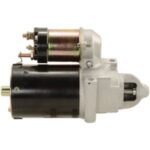Classic car restoration is a rewarding hobby, and a crucial aspect of it is auto body repair. Whether you’re tackling rust, dents, or preparing for a fresh coat of paint, understanding the basics of classic auto body repair is essential. This guide provides a foundational overview for enthusiasts looking to maintain or restore their vintage vehicles.
The first step in any classic auto body repair project is assessment. Carefully inspect the vehicle to identify all areas needing attention. Rust is a common enemy of classic cars, often lurking in wheel wells, rocker panels, and lower body panels. Dents and scratches from years of use are also typical issues. Properly diagnosing the extent of the damage will dictate the tools and techniques required.
Once you’ve assessed the damage, you’ll need to gather the right tools. Essential tools for classic auto body repair include:
- Sanders: Various grits and types, from orbital to detail sanders, are needed for removing rust and old paint, and smoothing body filler.
- Body Hammers and Dollies: For shaping and reshaping metal panels, essential for dent removal.
- Welding Equipment: For rust repair and panel replacement, MIG welders are commonly used by beginners.
- Body Filler and Spreaders: To fill in imperfections and create smooth surfaces.
- Grinders and Cutting Tools: For removing rust and cutting out damaged sections of metal.
- Safety Gear: Including respirators, eye protection, and gloves, is paramount throughout the repair process.
With tools in hand, you can begin the repair process. Rust removal often involves grinding away affected areas and welding in new metal patches. Dent repair starts with hammering out the dent as much as possible using body hammers and dollies. Body filler is then applied in thin layers to smooth out any remaining imperfections. Each layer of filler must be properly sanded before applying the next, ensuring a smooth and even surface.
Surface preparation is key for a lasting and professional finish. After bodywork is complete, the entire area needs to be sanded to create a smooth surface for primer. Primer not only provides a uniform base for paint but also helps to protect the metal from future rust. Once primed, the surface is sanded again with fine-grit sandpaper before the final paint coats are applied.
Painting is the final stage and can dramatically transform the appearance of your classic car. Proper technique, including even coats and sufficient drying time between coats, is crucial for a professional-looking paint job. After painting, clear coat is often applied to add depth and protection.
Classic auto body repair requires patience, practice, and attention to detail. While this guide provides a basic overview, further research and hands-on experience are vital for mastering these techniques. Numerous online resources and communities are available for classic car enthusiasts to learn more and share their knowledge. Remember to always prioritize safety and take your time to achieve the best results in your classic car restoration journey.

